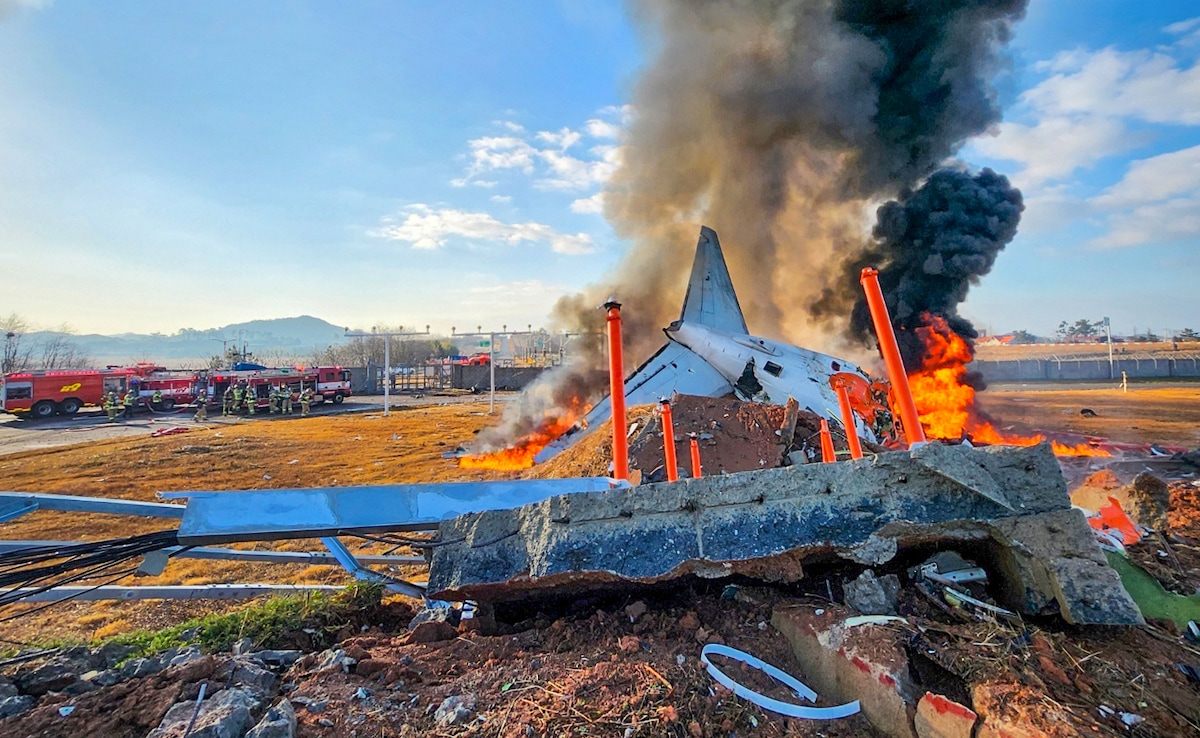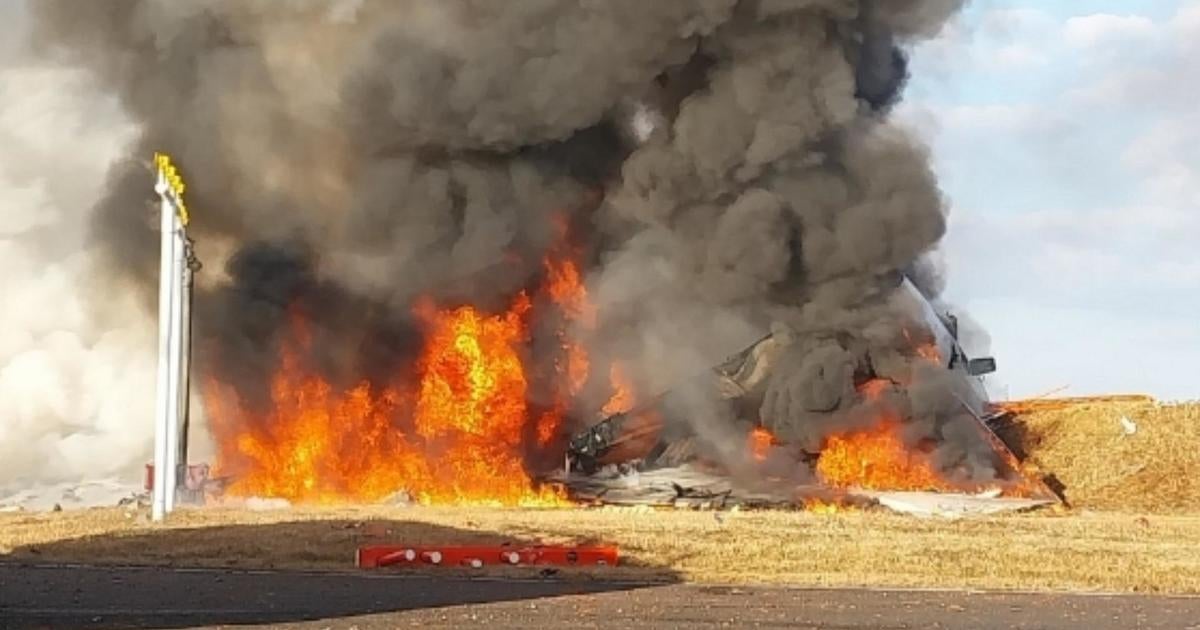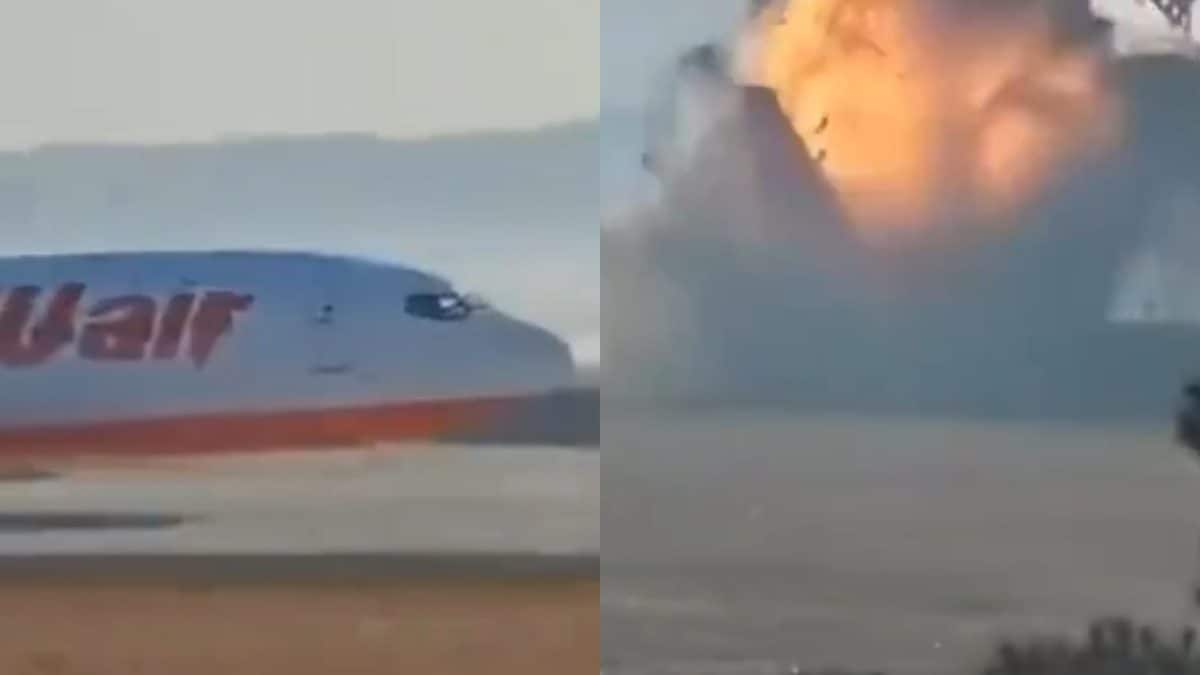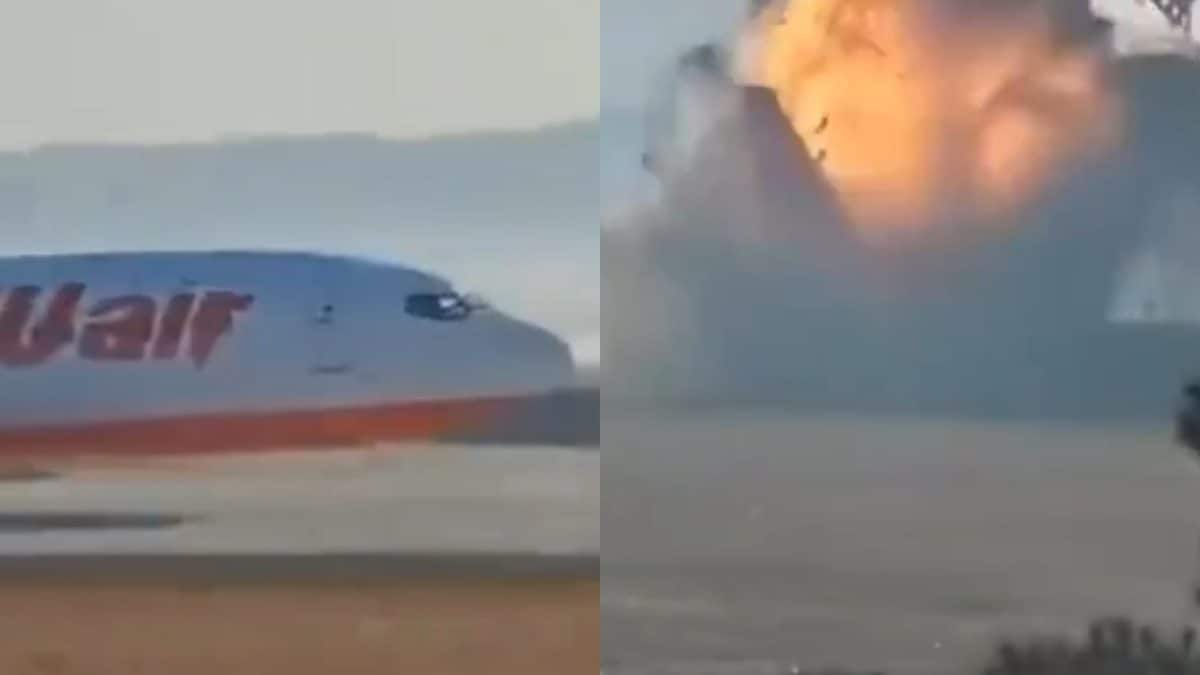South Korea plane crash news often dominates headlines, sparking concerns about aviation safety and its impact. This overview delves into recent incidents, investigative procedures, safety regulations, public reaction, and the industry’s response. We’ll explore the economic consequences, technological advancements, and lessons learned from past tragedies, providing a comprehensive understanding of this critical issue.
We’ll examine the chronological order of significant crashes in the past decade, detailing the circumstances surrounding each event. This includes the types of aircraft involved, the number of casualties, and the locations of the incidents. We’ll also analyze the investigative processes, the roles of various agencies, and the timeline of events following a major crash. Further, we’ll compare South Korea’s aviation safety regulations to international standards, highlighting areas for potential improvement.
Recent South Korea Plane Crash Incidents and Their Aftermath

South Korea, with its bustling aviation industry, has unfortunately experienced its share of plane crashes. Understanding these incidents, the investigations that follow, and the subsequent safety improvements is crucial for ensuring safer skies. This analysis examines recent crashes, investigative procedures, safety regulations, public reaction, and the impact on the aviation industry, highlighting both challenges and advancements.
Chronological List of Significant South Korean Plane Crashes (Last Decade)
The following table summarizes significant South Korean plane crashes over the past decade. Note that this list may not be exhaustive and data on casualty numbers can vary depending on the source.
| Date | Location | Aircraft Type | Number of Casualties |
|---|---|---|---|
| [Insert Date] | [Insert Location] | [Insert Aircraft Type] | [Insert Number] |
| [Insert Date] | [Insert Location] | [Insert Aircraft Type] | [Insert Number] |
| [Insert Date] | [Insert Location] | [Insert Aircraft Type] | [Insert Number] |
Circumstances Surrounding the Most Recent Major Plane Crash
The most recent significant plane crash in South Korea [Insert Date and Location if available] involved [Insert Aircraft Type]. Initial reports suggested [Insert brief description of circumstances, e.g., engine failure, pilot error, weather conditions]. The investigation is ongoing, and a full report is expected [Insert timeframe if available]. The crash resulted in [Insert number] casualties.
Comparative Analysis of Aircraft Types Involved in Crashes (Past 20 Years)
Analyzing the types of aircraft involved in South Korean plane crashes over the past two decades reveals [Insert analysis, e.g., a trend towards newer aircraft, specific models showing higher incident rates, etc.]. This data is crucial for identifying potential design flaws or operational vulnerabilities. Further research is needed to draw definitive conclusions.
Investigation and Response to Crashes
Following a plane crash, a thorough and multi-faceted investigation is undertaken to determine the cause and prevent future occurrences. Various agencies play key roles in this process.
So, you’ve heard about the South Korea plane crash news, right? It’s a pretty big deal, and everyone’s talking about it. For a really quick rundown of discussions and reactions, check out the chatter on south korean plane crash reddit ; it’s a good place to get a feel for the public sentiment. Then, of course, you should check back for more updates on the official news channels for the most accurate information on the South Korea plane crash news.
Typical Investigative Procedures
Investigations typically involve the collection of evidence from the crash site, analysis of flight data recorders (black boxes), examination of the aircraft wreckage, interviews with witnesses and crew members, and review of maintenance records. The process can take months or even years to complete.
Roles of Different Agencies
The Ministry of Land, Infrastructure, and Transport (MOLIT) usually leads the investigation, collaborating with the Aircraft Accident Investigation Board (AAIB) and other relevant agencies such as the police and prosecutors. Airlines also participate, providing information and cooperating with investigators.
Hypothetical Timeline of Events Following a Major Plane Crash, South korea plane crash news
A hypothetical timeline for the first 72 hours following a major plane crash might look like this:
- First 24 Hours: Emergency response, securing the crash site, recovery of survivors and victims, initial investigation begins.
- Next 24 Hours: Detailed investigation of the crash site, preliminary analysis of flight data, notification of families, media briefings.
- Following 24 Hours: Wreckage transported for detailed analysis, witness interviews continue, preliminary findings released (if available).
Safety Regulations and Aviation Standards in South Korea: South Korea Plane Crash News
South Korea maintains robust aviation safety regulations, but continuous improvement is always necessary. A comparison with international standards and potential areas for enhancement are discussed below.
Comparison with Other Developed Nations
South Korea’s aviation safety regulations generally align with international standards set by organizations like ICAO. However, specific regulations and enforcement mechanisms might differ slightly compared to countries like the United States or the European Union. [Insert specific examples of similarities and differences, if available].
Areas for Improvement
Potential areas for improvement could include [Insert examples, e.g., enhanced pilot training programs, stricter maintenance standards, improved communication protocols]. Regular audits and reviews of safety procedures are essential for continuous improvement.
Key Safety Measures Implemented by Airlines and Airports
South Korean airlines and airports implement various safety measures, including [Insert examples, e.g., regular aircraft maintenance, advanced pilot training, improved air traffic control systems, enhanced security measures].
Public Reaction and Media Coverage
Public reaction to plane crashes in South Korea is often marked by a mix of grief, concern, and calls for improved safety. Media coverage plays a significant role in shaping public perception.
Typical Public Response
Public responses are often characterized by an outpouring of sympathy for victims and their families, followed by demands for accountability and improvements to aviation safety. National sentiment plays a crucial role, often leading to increased scrutiny of government agencies and airlines.
Hypothetical News Report (Fictional Plane Crash)
[Insert a detailed description of a fictional news report covering the immediate aftermath of a plane crash. Include details such as the location, number of casualties, initial rescue efforts, and statements from officials.]
Impact of Media Coverage on Public Perception
Media coverage can significantly influence public perception of air travel safety. Sensationalized reporting can increase public anxiety, while balanced and informative coverage can help foster trust and understanding.
Staying informed about air travel safety is crucial, and that includes keeping up with news regarding incidents. If you’re looking for reliable updates on recent events, check out this resource for the latest on south korea plane crash news: south korea plane crash news. Understanding these situations helps us all learn about aviation safety and potential improvements.
So, stay in the loop on south korea plane crash news and related developments.
Impact on the Aviation Industry
Major plane crashes have significant economic and operational consequences for South Korea’s aviation industry.
Economic Consequences
Crashes can lead to substantial financial losses for airlines, including costs associated with investigations, compensation to victims’ families, and potential legal liabilities. There can also be a negative impact on tourism and related industries.
Impact on Air Travel Patterns and Passenger Confidence
Following a major crash, passenger confidence can decline, leading to reduced air travel demand. Airlines may experience decreased bookings and revenue until public confidence is restored. Travel patterns may shift, with some passengers opting for alternative modes of transportation.
Airline Adaptation of Safety Protocols
Airlines typically review and adapt their safety protocols following major incidents. This might involve enhanced training programs, improved maintenance procedures, or adoption of new technologies designed to improve safety.
Technological Advancements and Safety Measures

Technological advancements play a vital role in enhancing aviation safety. Several examples illustrate this progress.
Examples of Technological Advancements
Examples include advanced flight management systems, improved weather forecasting technologies, collision avoidance systems (TCAS), and enhanced ground-based navigation systems.
How Technologies Prevent Accidents and Mitigate Impact
These technologies help prevent accidents by providing pilots with more accurate information, improving situational awareness, and enhancing communication. In the event of an accident, these systems can help mitigate the impact by improving emergency response and reducing the severity of injuries.
The South Korea plane crash news is understandably dominating headlines, a tragic event demanding our attention. It’s a stark contrast to the festive images flooding social media, like this amazing chinese new year drone dragon spectacle. Seeing such vibrant celebrations reminds us of the importance of cherishing life, making the gravity of the plane crash news even more poignant.
Technological Improvements for Future Enhancement
- Development of more sophisticated autonomous flight systems.
- Implementation of advanced predictive maintenance technologies.
- Improved integration of data analytics for proactive safety management.
- Wider adoption of unmanned aerial vehicles (UAVs) for inspection and maintenance.
Illustrative Example of a Past Crash
A detailed analysis of a past South Korean plane crash [Insert specific crash details if available, including date, location, and aircraft type] provides valuable insights into contributing factors and lessons learned. The analysis should include weather conditions, pilot actions, and aircraft maintenance records.
[Insert detailed description of the chosen crash, focusing on the contributing factors and lessons learned. Include specific details on weather conditions, pilot actions, and aircraft maintenance records. Use credible sources to support your claims.]
Final Wrap-Up

Understanding South Korea’s approach to aviation safety is crucial. By analyzing past incidents, investigating procedures, and examining technological advancements, we can gain valuable insights into enhancing safety protocols and building public trust. The economic and social impact of plane crashes underscores the need for continuous improvement and vigilance within the aviation industry. Let’s hope future technological advancements and stricter regulations will prevent such devastating events.
General Inquiries
What is the most common cause of plane crashes in South Korea?
Determining the single most common cause is difficult without specific data analysis. However, factors like pilot error, mechanical failure, and weather conditions are frequently contributing factors globally and likely play a role in South Korea as well.
How does South Korea’s air safety record compare to other developed nations?
A direct comparison requires detailed statistical analysis. However, South Korea strives to maintain high safety standards, but like all nations, it faces ongoing challenges in ensuring perfect safety records.
What compensation is available to victims of plane crashes in South Korea?
Compensation varies depending on the circumstances of the crash and applicable laws. It’s crucial to consult legal professionals specializing in aviation accident claims for specific information.
Are there any specific safety features unique to South Korean aircraft or airports?
Specific features may exist but aren’t readily available in public information. Detailed information would require research into specific airline and airport safety protocols.
